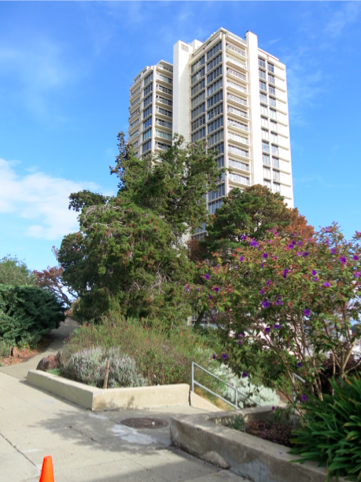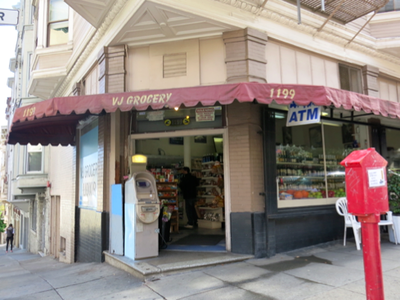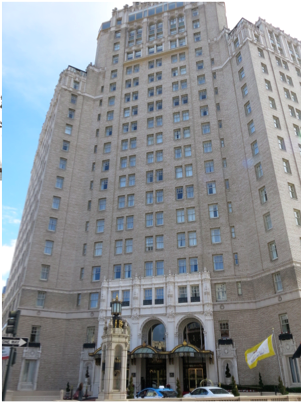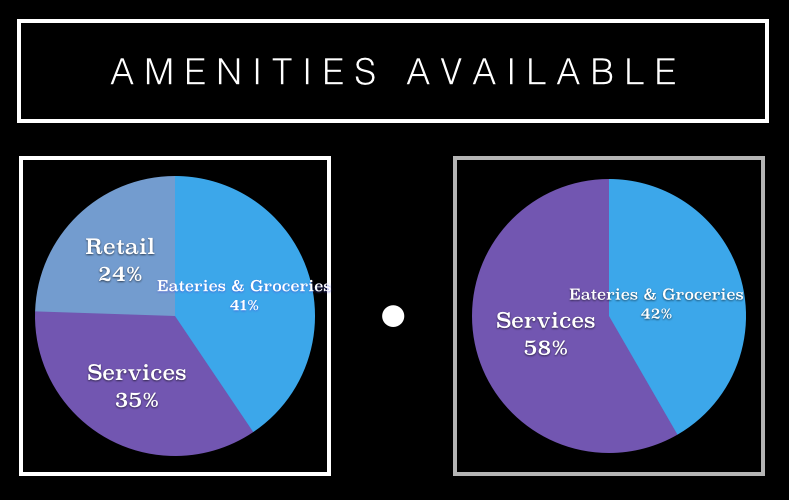All about Land use
|
Team Members
Erin Tan - Mercedes Peterson Caesar Zan - Ray Huang - Lily Wang - Reese Tang |
|
Our project topic has to do with exploring the connection between Land Use and Quality of Life. Land use refers to how humans manage/plan our usage of land whereas quality of life is understood as an individual’s personal satisfaction with his or her wellbeing. Quality of life is closely related to land use as people are interacting with their physical surroundings all the time, from where they live, to how they get to work, to whether they have easy access to leisure activities. To further investigate the link between land use and quality of life, we narrowed our focus down to two areas in San Francisco – Nob Hill and Chinatown where we conducted our fieldwork, which involved counting and documenting the types of land use in both areas. Based on our observations, we ultimately chose to concentrate our efforts on Chinatown where we looked for solutions to solve the dearth of entertainment venues.
|
Summary
|
Fieldwork Observations
We used Stockton Street and Taylor Street as proxies for Chinatown and Nob Hill respectively. Conducting our fieldwork at Stockton Street on a Saturday morning, we observed that there were many people out and about eating brunch or stocking up on groceries or simply visiting. Land use was mostly mixed, where buildings mostly housed various services and amenities such as restaurants, grocery stores, community centers, and banks on the ground floor while the upper floors contained residences. The crowd was predominantly Chinese, with a relatively high concentration of elderly folk. Parking was limited but the street was well served by a few bus routes. In contrast with a bustling Stockton Street that had an endless flow of people on both sides of the street, Taylor Street was relatively empty and extremely quiet. Single use residential buildings lined the street and ground floors were mostly used as garages. Parking was also easily available, with cars filling the street and spilling over into its adjoining streets. Public transport however, was not easily accessible as we did not encounter any bus stops nor subway stations. |
Prototyping Process
After consolidating our fieldwork observations, we noticed that despite the impressive amount of space devoted to providing essential services for Chinatown residents and the Chinese community at large, entertainment options were few and far between. Hence, we decided to try and come up with ideas to solve the problem and hopefully improve the quality of life for residents. To free up space for entertainment purposes in a crowded downtown area where land use is often maximized and space is limited was quite a challenge but we chanced upon the idea of a parklet, where space (e.g. parking lots, roads, pavements) undergoes a temporary land use change to serve the needs of the community without major changes to the urban landscape. We adapted the idea and applied it to Chinatown, coming up with plans to introduce temporary entertainment venues such as night markets, open air theaters, outdoor concert and snack stalls by taking over certain side roads and pavements in the evenings. This way, entertainment can be provided and quality of life can be improved on without having to make any major changes to the land use pattern in Chinatown. To test the idea, we created posters of possible entertainment events taking place in Chinatown and invited two groups of youths who lived in the vicinity to express their like/dislike of the ideas by voting Yes or No, respectively. They were also encouraged to provide written feedback by explaining their choices and/or offering suggestions on other potential entertainment options. |
Outcomes
Despite the lack of an actual working prototype, the posters offered visual stimuli and the voting process, conducted with some verbal explanations, kick-started a lively debate on the issue. The testing process was a smashing success as both groups of youths agreed heartily with the lack of entertainment options in Chinatown just as we have identified based on our fieldwork observations. Many voted in favor of all the ideas we came up, though they were less enthusiastic about the concerts and movies. Night markets and temporary food stalls generated the most buzz and many of the participants started their own discussions spontaneously, declaring what types of food they would want to have available or what kind of goods they would like to have sold at the night markets. Participants contributed generously for the written feedback portion of the testing experience as well and offered many interesting insights by pointing out for example, that concerts might be too noisy for the elderly residents in Chinatown, or that safety at night is a key concern amongst the youth. Potential sites were also suggested, with Grant Ave strongly recommended due to the observed lack of road traffic at most times. |
Raw Data
San francisco fieldwork: Observing Chinatown & Nob HIll
Documenting our Prototyping experience in chinatown
FIeldwork & Prototyping Analysis
- C H I N A T O W N - - N O B H I L L -
G L A R I N G R E S U L T : N O E N T E R T A I N M E N T
- 4 1 V O T E S I N F A V O R - - 1 4 V O T E S A G A I N S T -
- 4 8 V O T E S I N F A V O R - - 1 6 V O T E S A G A I N S T -
The combination of our prototyping results in addition to the enthusiasm with which the participants responded to when hearing of potential new entertainment options points indubitably towards the need found in Chinatown to implement more community-centered recreational services. A temporary exchange of land use allocation is not only viewed favourably upon by many of the residents of the area, it is something that is felt that the area lacks. By transforming a side street into a night market on occasion, residents have the opportunity to feasibly change land that is used for alternative purposes in a non-permanent manner, furthermore increasing their quality of life.
Video
Tsinghua Team - uBalloon
Work done by our collaboration partners at Tsinghua
Uballoon prototype Simulation
DESIGN EXPO & Final Report
| final_report.pdf | |
| File Size: | 55 kb |
| File Type: | |
Background information
| Leisure and Quality of Life Literature Review | |
| File Size: | 66 kb |
| File Type: | |
| Comparing Chinatowns of San Francisco and Singapore | |
| File Size: | 77 kb |
| File Type: | |































